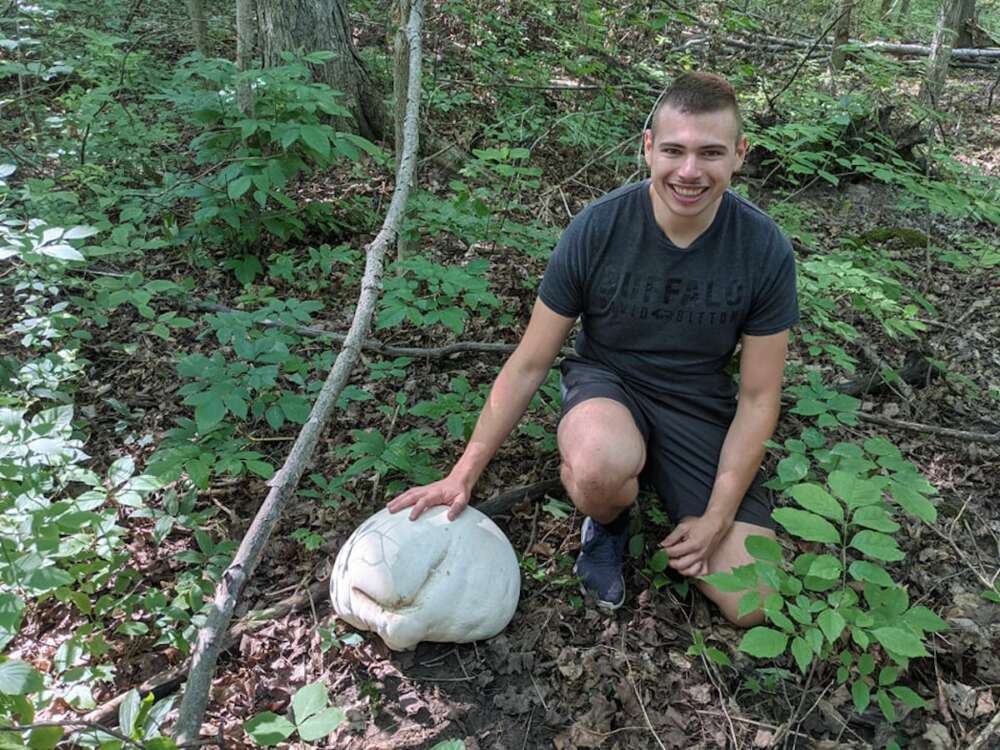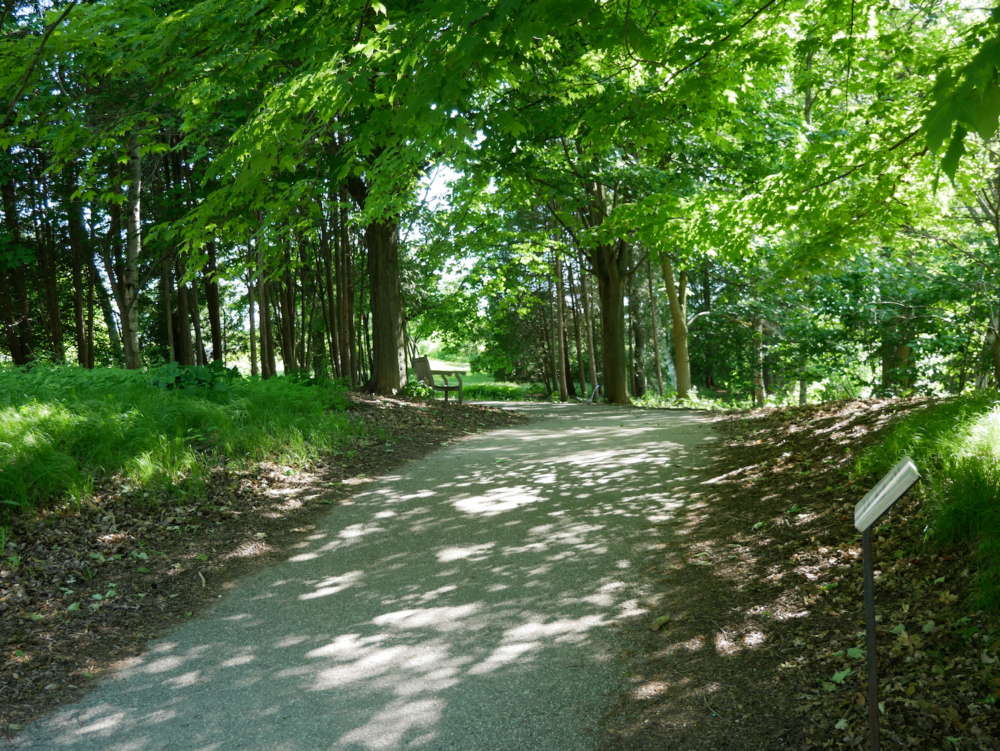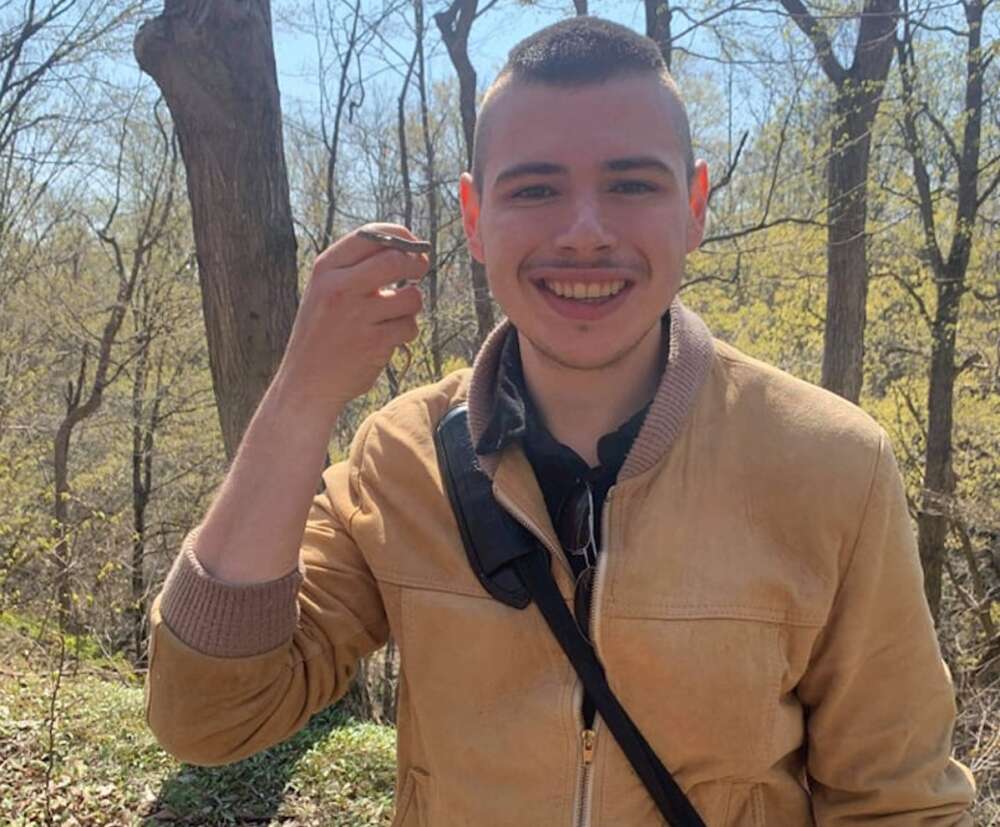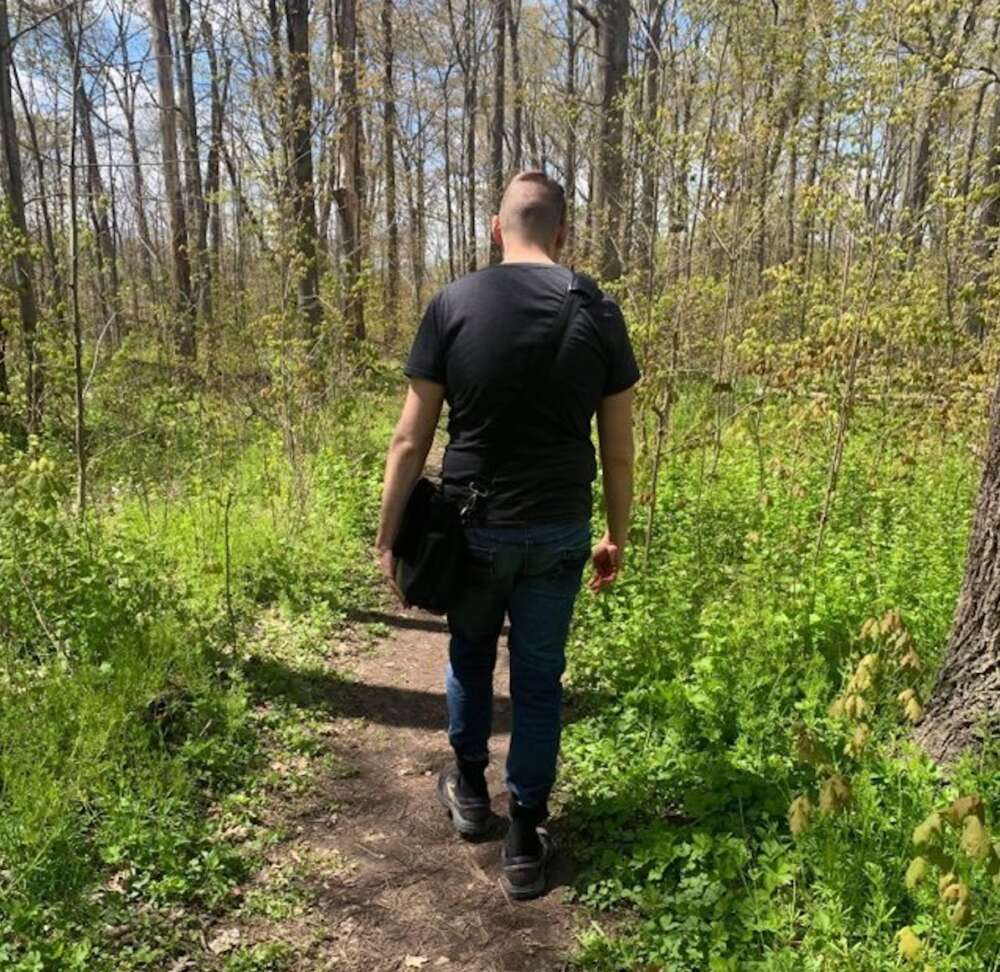
To the Anishinaabe people, a person in a forest is just one being among a great many beings, says Brad Howie, a University of Guelph graduate student and member of Nipissing First Nation in northeastern Ontario.
Howie will share his understanding of the Anishinaabe philosophy and science of our place in the natural world during a Saturday afternoon walk through Victoria Woods of the University’s Arboretum as part of the Arboretum Expo.
Registration for “Mtigwaaki: Among the Trees” is now closed. COVID-19 restrictions limited participation to 25 people.
“From the Western intellectual perspective, the approach to the forest is to see yourself as separate, like you are entering the forest as a visitor to a place,” Howie said. “From the Anishinaabe point of view, you are part of the forest, one of many beings there, all of equal importance. There is no word in Anishinaabemowin, the Anishinaabe language, for forest. It is a verb, literally meaning to be among the trees. You are a part of it, not just in it.”

A graduate student in environmental science, Howie’s great love for and deep connection to the natural world has always been a part of who he is. That instinctual connection, he said, drew him to pursue environmental studies at U of G, where he can gain knowledge that helps him reconnect with his heritage and share his findings with others.
The focus of his current research project is to contribute to weaving Indigenous knowledge systems into the U of G Arboretum by developing educational materials that highlight Anishinaabe science.
“I am by no means a Knowledge Holder,” said Howie, who grew up in Mississauga, Ont. His mother was a victim of the “Sixties Scoop” that saw thousands of Indigenous children in this country removed from their families and cultures.
“I am just a student on my journey. How to be in the natural world is something we are all learning, and we get to learn it together. Everybody is a student on this journey.”

He is working with Anishinaabe Elders and Knowledge Holders on a community-led project that incorporates Indigenous philosophies of the environment, teachings from plants and animals, and language into educational materials for the Arboretum.
“One Anishinaabe teaching I really appreciate is that human beings have four states of being,” said Howie, who studied biochemistry at the University of Waterloo before coming to U of G. “We are not just intellectual – we have spirit, physical bodies, emotions and intellect.”
“Approaching the forest is not just about the intellect. It is also about having your heart open, which allows you to see everything for what it is. We are part of creation, and everything has a purpose in creation. Everything is a being, is your kin and deserves respect.”
Anishinaabe Elders, he said, have vast knowledge of the forest and know the names of many species that live there. That knowledge comes through getting onto the land and being among the trees, but it also comes through being immersed in the culture.

“It is something that can be taught, but it’s a lifelong process and you need to experience it,” Howie said.
“Mtigwaaki: Among the Trees” is an interpretive walk in the form of a story. Howie will discuss four interpretive signs that are expected to be posted this fall, each one asking a thought-provoking and universal question.
“The walk starts at Victoria Woods with the question: How do I enter the forest?” he said. “The second question is: How am I related to creation? The third question is: What does the forest give to me and what can I give to it? And the last question is a call to action: How can we better treat Mother Earth?”
Most importantly, he hopes participants will be inspired by nature.
“I think this educational outreach work is really important. One thing I find with science in general is that the language of studies can be so scientific that no one can read them except scientists. Projects like this speak to everyone from children to scientists and encourage everyone to approach the land differently and perhaps help reignite their love of nature.”
After graduation, Howie plans to work in Canadian Indigenous science education. He believes knowledge of Indigenous science is essential for the sustainability of our planet and for reconnecting Indigenous peoples to lost heritage.
Learn more about two other guided walking tours and more Arboretum Expo activities on the Arboretum website.